Chapter 3: Gear Selection – What to Wear During Winter Swim Conditions
When the lake temperature dips below 50F, a strange thing happens – namely, most people decide that it’s too cold to continue enjoying the fun and adventure that accompanies outdoor swimming. And that’s a shame, really, since it doesn’t have to be that way.
The truth is that – with the right equipment and preparation – you can comfortably swim and train in the lake year-round.
In this chapter, we’re going to look at what type of equipment you might need to accomplish this. I say “might” because everybody has his or her own level of tolerance to various temperatures. So while one person might be able to swim comfortably in 45F or below water temperatures in just a swimsuit, cap, and goggles, for others this is nothing short of a Herculean challenge.
So for now, I’m going to describe a gear setup that I’ve settled on after much experimentation. You may find the need to adjust up or down based upon your own physiology and tolerance to colder water. But we’ve found that this works for most people who’ve come out and braved the lake with us during the coldest months.
Jammers
The first layer is whatever you would normally wear when swimming. I use swim jammers since they fit well under a wetsuit.
Wetsuit
During the nadir of winter when the water gets close to freezing (32F) and the air can be even colder, I use a regular triathlon fullsuit. These typically have 3mm neoprene on the arms and back with slightly thicker layers on the chest and legs to assist with buoyancy. Others prefer something thicker like a scuba wetsuit. But in either case, once you get over the initial shock of the cold water entering the suit, the layer of water warms up pretty quickly and you can swim quite comfortably.
Neoprene boots
I currently use 7mm neoprene dive boot, and they work quite well. When it’s really cold in the lake, I pour in some warm-to-hot water in these before putting them on and make sure that the bottom of my wetsuit completely covers the openings at the top.
Neoprene gloves
I currently use the 5mm scuba gloves. They’re slip ons, but they do a pretty good job of keeping out the water if placed on properly. I tried out other 5mm gloves with velcro wrist fasteners, but they just didn’t seem to work as well as the slip-ons. As with the neoprene booties, I add the hot water to them before putting them on when the lake is super cold.
Silicone swim cap
I wear this underneath my neoprene cap to add an extra layer on my head and to keep the cold water out of my ears.
Neoprene dive hood
I use a 5mm neoprene dive hood over my swim cap. I prefer one without a bib as it allows for better mobility in the water. The only negative is that there’s a small part of the back of my neck that’s still exposed to the cold water. It’s a bit of a cold shock (literally) at first, but it doesn’t bother me after a couple of minutes.
Goggles
I use standard swim goggles. I usually defer to ones that have larger lenses and more visibility (versus low profile swim goggles for racing).
That’s it! Now you should be all set when it comes to winter swim gear!
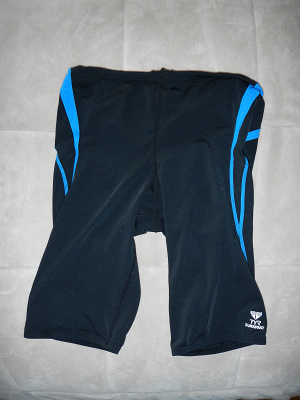
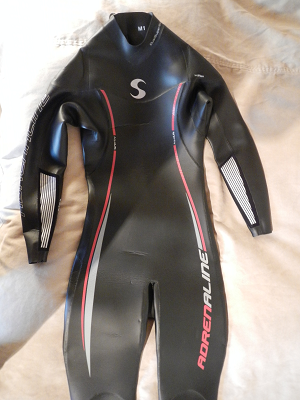
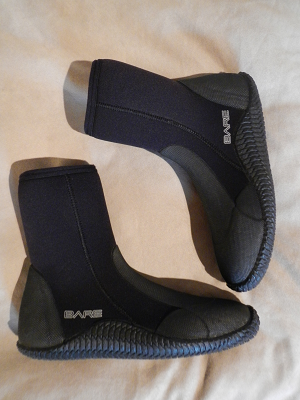

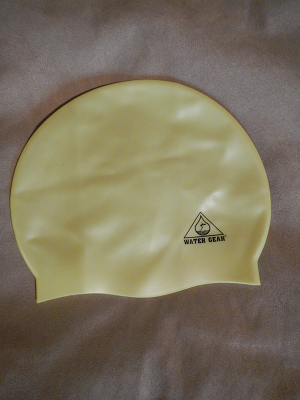
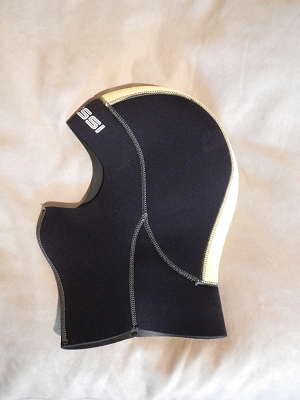
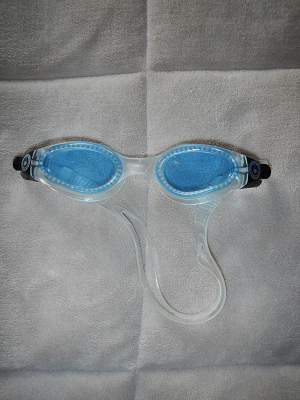
Thanks for the tips! I just finished my first official swim class and have become more comfortable in the water. I am looking to take a Masters Swimming Class over the winter and was wondering if you have any suggestions for clothing gear for women in a non-heated outdoor pool. Classes are at 5am and temperature drop quite drastically during the winter season.
Hi Carina. Any idea how cold the water will be during the winter months? I’ve been able to tolerate temps as low as 42F with a wetsuit top and thermo cap. There are also thermo rash guards that make you more comfortable in the water – but they’re not design for distance swimming.
This is a fantastic article and tremendously helpful. Thank you! I’m new to the world of open water swimming and can’t wait to get in Lake Michigan this year.
As a follow up to this post, could you perhaps talk about what you recommend wearing at various temperatures? For example, I own an Xterra Vortex; at what temps is that alone appropriate? When recommend shedding the gloves? The hood? The boots? This would provide great insight into the sport for a novice.
Thanks again for all of your work. I really value this resource and online community. I also hope to join you at the lake soon!
Be well,
Ryan
Thanks Ryan! Glad you found this helpful. To answer your other questions, it’s really a matter of individual tolerance. I can swim with just a wetsuit and neoprene cap in temps as low as 42F – although my hands and feet will still be a bit uncomfortable. I’ve gone wetsuit-free in as low as 45F for up to a half mile. But your cold tolerance might be different – and it might even vary from day to day. So I would recommend that you bring your gear out and just experiment on site. There have been a number of times where I’ve opted to wear gloves and booties even though the water was warmer. For some reason, that morning I just felt the cold more!
My Quantana Roo ultra full has heald up very well for 5 years of winter swims